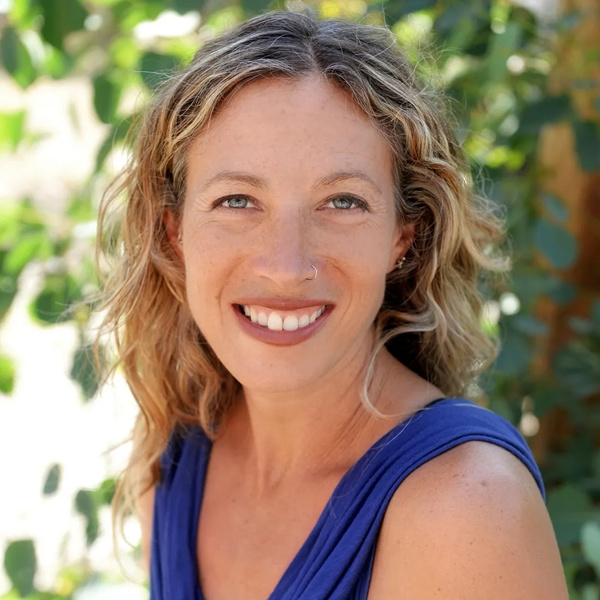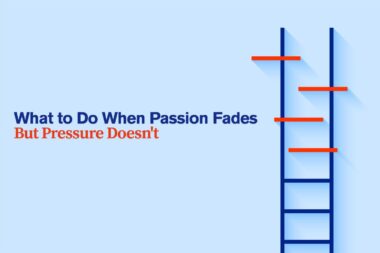When I was twenty-one, I believed that if I did everything right, life would finally make sense. I was the daughter of a respected Orthodox rabbi, married within the faith, and living the life I had been taught to revere. My worth was measured by how well I followed the rules. I didn’t know then that obedience can sometimes be a quiet form of self-abandonment.
Then my father was arrested for selling heroin to an undercover cop.
The collapse was immediate and complete. Everything I thought I could trust—my family, my faith, even my own sense of goodness—disappeared overnight. The man who preached morality from the pulpit was suddenly exposed, and so was the shadow side of my childhood. I began to see how deeply I had confused love with approval, truth with appearance. I didn’t yet know who I was without the scaffolding of that old world. What I did know was that I could no longer pretend.
That moment became the fracture that would shape my life. And, in time, it became the opening through which the light began to enter.
The Body Never Forgets
I didn’t have the language for trauma then. I just knew that my body hurt, and I was always tired. My back ached constantly; scoliosis twisted my spine in ways I couldn’t control. I became a physical therapist, perhaps unconsciously hoping that if I learned to fix others, I might also learn to fix myself. But no matter how many techniques I mastered, the pain returned—sometimes in my body, sometimes in my heart.
Back then, I thought healing was about correction—making things straight, strong, aligned. I saw pain as something to eliminate, not something to understand. It would take years for me to realize that my back pain wasn’t just a mechanical problem; it was a story my body had been trying to tell me for years.
I often say now to my students and patients:
The body will continue to speak, until we learn how to listen.
Every tension pattern, every spasm, every curve in my spine was a reflection of something unseen—fear, shame, grief, the constant effort to hold myself together. Trauma, I learned, isn’t just a story in the mind; it’s a posture the body keeps repeating.
Finding the Medicine of Presence
My first yoga class was an act of desperation. I wanted relief from pain. What I found was something I didn’t expect: silence. And in that silence, I met myself—raw, unfiltered, and unguarded.
I still remember my first savasana, lying on the mat with tears streaming down my face for reasons I couldn’t explain. For the first time in years, I wasn’t trying to be good, or strong, or composed. I was simply there—breathing, feeling, existing. It was terrifying and liberating at the same time.
Yoga didn’t fix me. It revealed me. It offered me a language for what my body already knew—that healing begins not with control, but with surrender. The poses became metaphors for my life: in every twist and opening, there was resistance; in every release, a glimpse of freedom. Slowly, I began to trust that my body wasn’t my enemy—it was my greatest ally.
Listening to the Body
Later, I discovered Hakomi Therapy, a mindfulness-based somatic psychotherapy that helped me dive even deeper. Through Hakomi, I learned to approach my body’s sensations with curiosity instead of judgment. When my lower back tightened, instead of stretching it away, I asked, What are you trying to say? Often, what surfaced wasn’t physical at all—it was emotion, memory, belief.
I began to see that my pain was holding intelligence. My spine curved to protect me from the weight of impossible expectations and being pulled in different directions. My heart closed to survive disappointment. My muscles gripped to keep me safe in moments when safety was never guaranteed.
The therapy helped me peel back the layers of unconscious patterns—those deeply ingrained beliefs that say, “I am not enough,” or “I must earn love by suffering” or “I must achieve to deserve love.” Once those hidden convictions were brought into awareness, the body began to reorganize itself. It was as if the physical and emotional selves were finally having a long-overdue conversation.
Healing didn’t come as a miracle; it came as a practice of listening.
From Control to Compassion
My upbringing had taught me that worthiness was something to prove. I brought that same pattern into every area of my life—into work, into relationships, even into my yoga practice. For years, I believed that if I could just perfect the posture, the breath, the relationship, the body, I would finally be safe.
But perfection, I discovered, is just fear dressed up as virtue.
Real healing began the moment I stopped trying to fix myself and started meeting myself as is.
That phrase—as is—became both my mantra and the title of my memoir. To live as is means to accept yourself in the exact moment you’re in, without shame or denial. It doesn’t mean resignation; it means truth. It means meeting your imperfections with compassion instead of criticism, and allowing the process of transformation to unfold in its own time.
When we stop striving to become someone else and start listening to who we already are, something profound shifts. The body softens. The breath deepens. Life begins to flow again.
Healing as a Discipline of Kindness
Healing, I’ve learned, isn’t a one-time revelation—it’s a daily discipline. Some days it looks like meditation and mindful movement. Other days it’s choosing to rest when the old perfectionist voice tells you to push harder. It’s remembering that progress isn’t linear and that every setback is an invitation to return to presence.
Acceptance doesn’t make us passive; it makes us powerful.
When we stop fighting ourselves, we reclaim the energy we once used for resistance. We begin to grow from the inside out.
There’s a line from Pema Chödrön that I often return to:
Only when we know our own darkness well can we be present with the darkness of others.
That is the essence of my work now—helping others find the courage to meet themselves fully, to discover that the very pain they’ve been running from holds the key to their purpose. I guess my own imperfections have become my greatest gift.
The Emotional Spine
In my practice as a yoga therapist and physical therapist, I see the deep interconnection between emotional patterns and physical alignment. The spine, our literal backbone, often mirrors our emotional state. When fear dominates, we tighten and shrink. When grief lingers, the chest caves inward. When we feel unworthy, our posture reflects collapse.
As my own healing evolved, I began to teach from this understanding. I developed The Happy Back Yoga Method, an integrative approach combining physical therapy, yoga, and Hakomi principles. What makes it unique is that it addresses not just structure, but story. A posture is never just physical—it’s also psychological.
When clients learn to sense what they feel, to stay present with the discomfort instead of fighting it, their nervous system begins to recalibrate. Fear subsides. Breath returns. Alignment follows naturally.
True healing is never mechanical—it’s relational. It’s a dialogue between body and soul and safety and trust is a prerequisite.
Three Practices for Healing Through Presence
If there’s one thing I’ve learned from decades of working with pain—both my own and others’—it’s that the body is always speaking. The question is: are we listening?
Here are three simple ways to begin.
1. Breathe into What Hurts
Find a quiet moment and notice where you’re holding tension. Instead of trying to change it, simply breathe there. Ask: What are you trying to tell me? Don’t demand an answer. Just listen. Often, awareness itself begins the process of release. Decide that you are willing to accept whatever shows up.
2. Practice Loving Boundaries
Healing isn’t about endless openness—it’s about discerning what nourishes and what depletes you. Notice when your “yes” is really a “no.” Yoga teaches us that containment and expansion are both sacred. Protecting your energy is a form of self-respect.
3. Move With Meaning
Whether you practice yoga or simply walk outside, let your movement be mindful. Each step, each pose, each breath can be an offering to the part of you that once felt broken. When the body moves with awareness, it rewrites the nervous system’s story of fear into one of safety.
The Science of Letting Go
Modern neuroscience now supports what yogis and mystics have known for centuries: the body and mind are inseparable. Chronic stress and trauma dysregulate the nervous system, keeping us in fight, flight, or freeze. The longer we remain in that state, the more the body tightens, the breath shortens, and the mind loops in anxiety.
Practices like yoga, meditation, and mindful therapy help shift the body from threat to safety—from sympathetic arousal to parasympathetic calm. This physiological shift is what allows the body to repair itself. Muscles release, the immune system strengthens, and emotional resilience grows.
In my clinical work, I’ve seen patients who have suffered for decades begin to experience relief when they finally address the emotional undercurrents beneath their pain. The physical transformation often mirrors the emotional one—shoulders drop, spines lengthen, faces soften. Healing, it turns out, is a posture too.
From Pain to Purpose
The deeper I went into my own healing, the more I realized that pain was never meant to be an obstacle—it was a messenger. It led me toward purpose, compassion, and authenticity. It taught me to trust the intelligence of my body and the wisdom of life itself.
Over the years, I’ve moved from Montreal to San Diego to Israel, from broken marriages to fulfilling work, from trying to prove myself to simply being myself. Along the way, I learned that freedom doesn’t come from escaping pain; it comes from transforming our relationship to it.
Yoga became not just a practice, but a way of living—a reminder that everything we seek is already within us, waiting to be remembered.
Pain, I’ve discovered, is the soul’s way of asking us to wake up. It breaks down the structures that no longer serve us so that something truer can emerge. When we meet that pain with presence, we turn it into wisdom. When we meet it with compassion, we turn it into purpose.
A Final Invitation
If you are carrying the weight of your own story—family wounds, chronic pain, old patterns of fear—start here, in this moment. You don’t need to fix everything. You only need to begin.
Take one conscious breath. Feel the ground beneath you. Place a hand on your heart and whisper, I’m here. Then as Tara Brach recommends, ask yourself, Can I be with this?
That is the beginning of every healing journey—the moment you stop running and start listening.
Transformation doesn’t mean becoming someone new; it means remembering who you were before the world taught you to hide.
When we dare to live in that realness—when we accept ourselves as is—we find that our pain no longer defines us. It refines us.
And that is how pain becomes purpose.
Image Credit: Freepik

Rachel Krentzman PT, C-IAYT, MBA, is a physical therapist, certified yoga therapist, and Hakomi practitioner. She is the author of As Is: A Memoir on Healing the Past Through Yoga, and teaches internationally on integrating yoga therapy into healthcare. Learn more at happybackyoga.com.



































